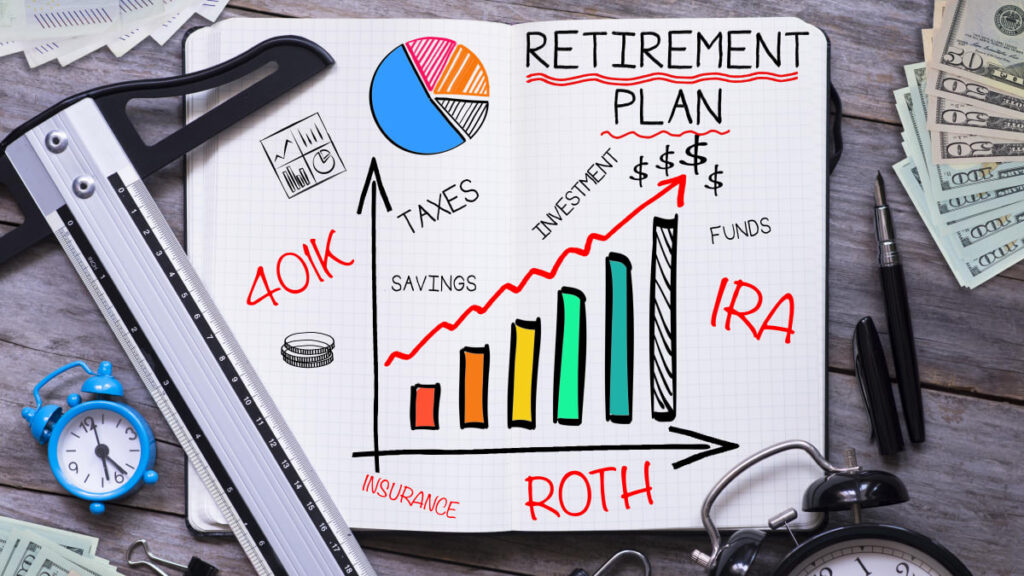Retirement planning is a crucial aspect of financial security. It involves making wise decisions to ensure a comfortable and fulfilling life after you stop working. By carefully considering key factors, starting early, diversifying your investments, and taking advantage of employer-sponsored plans and individual retirement accounts (IRAs), you can maximize your golden years. In this article, we will explore the importance of retirement planning and highlight top strategies to help you achieve your retirement goals.
Understanding the Importance of Retirement Planning
Retirement planning plays a vital role in ensuring financial security throughout your retirement years. It allows you to maintain your desired lifestyle, cover healthcare expenses, and pursue your passions without worrying about money. Without a well-thought-out retirement planning checklist, you risk running out of funds or having to rely solely on social security benefits.
Planning for retirement is not just about setting aside a portion of your income; it involves a comprehensive assessment of your current financial situation and future goals. It requires careful consideration of various factors such as your income sources, expenses, debts, and investments. By taking a proactive approach to retirement planning, you can better prepare for the uncertainties of the future and enjoy a comfortable retirement lifestyle.
The Role of Retirement Planning in Financial Security
A solid retirement plan serves as a safety net, providing you with a predictable income stream and protecting you from the unforeseen challenges that may arise during retirement. It allows you to have a clear picture of your financial situation and make informed decisions accordingly. By setting specific retirement goals, you can work towards achieving them and enjoy financial peace of mind.
Moreover, retirement planning is not a one-time event but a continuous process that requires regular review and adjustments. As your circumstances change, such as health issues, market fluctuations, or family dynamics, your retirement plan may need to be revised to reflect these changes accurately. By staying actively engaged in your retirement planning, you can adapt to new circumstances and ensure that your financial future remains secure.
Key Factors to Consider in Retirement Planning
When creating your retirement plan, there are several factors to consider. These include your desired retirement age, expected lifespan, current and projected expenses, healthcare costs, and inflation. Additionally, it is crucial to assess your risk tolerance, as this will influence your investment decisions and asset allocation.
Furthermore, incorporating tax planning strategies into your retirement plan can help maximize your savings and minimize tax liabilities in retirement. By exploring tax-efficient investment options, utilizing retirement accounts effectively, and considering potential tax implications, you can optimize your retirement income and preserve your financial resources for the long term.
Starting Your Retirement Planning Early
One of the most effective retirement planning strategies is to start as early as possible. The power of compound interest cannot be overstated. By giving your investments more time to grow, you can harness the benefits of compounding and potentially generate substantial wealth.
When you begin your retirement planning journey early, you are essentially giving yourself the gift of time. This time allows you to weather the inevitable fluctuations of the market and gives you the flexibility to adjust your strategy as needed. Additionally, starting early instills a sense of financial discipline and responsibility that can positively impact other areas of your life.

The Power of Compound Interest
Compound interest works by reinvesting your earnings, allowing your initial investment to grow exponentially over time. The longer your money has to compound, the more significant the impact. By starting your retirement savings early, you can take advantage of compounding and enjoy a more secure financial future.
Moreover, the concept of compound interest is not just about the numbers; it also reflects your commitment to long-term financial health. By embracing the power of compounding, you are demonstrating a forward-thinking approach that prioritizes your future financial well-being over short-term gains.
Benefits of Early Retirement Savings
Aside from compound interest, there are several other advantages to starting your retirement savings early. Firstly, it allows you to set aside smaller amounts each month, as opposed to having to save larger sums later in life. Secondly, early savings can provide a buffer against unexpected financial setbacks.
Furthermore, beginning your retirement planning early can give you a sense of security and peace of mind. Knowing that you have taken proactive steps towards securing your financial future can alleviate stress and allow you to focus on other aspects of your life. Early retirement planning is not just about money; it is about creating a sense of stability and confidence that extends beyond your finances.
Diversifying Your Retirement Investment Portfolio
Diversification is a key principle in retirement investing. By spreading your investments across different asset classes, you can minimize risk and potentially increase returns. Asset allocation plays a vital role in achieving this balance.
When it comes to diversifying your retirement investment portfolio, it’s not just about spreading your investments across different asset classes. It also involves considering factors such as geographical diversification, industry diversification, and investment vehicle diversification. Geographical diversification involves investing in assets from different regions to reduce the impact of local economic downturns. Industry diversification entails investing in various sectors to avoid being overly exposed to the performance of a single industry. Lastly, investment vehicle diversification means utilizing a mix of investment options such as mutual funds, exchange-traded funds (ETFs), and individual stocks to further spread risk.
The Importance of Asset Allocation
Asset allocation involves dividing your portfolio among various asset classes such as stocks, bonds, and real estate. The goal is to minimize the impact of market fluctuations on your overall portfolio value. By allocating assets based on your risk tolerance and financial goals, you can achieve a well-balanced and diversified retirement investment strategy.
Moreover, asset allocation is not a one-time decision. As you move closer to retirement, your asset allocation should gradually shift towards more conservative investments to protect your accumulated wealth. Rebalancing your portfolio periodically is essential to ensure that your asset allocation aligns with your current financial situation and retirement timeline.
Balancing Risk and Reward in Retirement Investments
It’s important to strike a balance between risk and reward when making retirement investments. While higher-risk investments have the potential for higher returns, they also carry a higher chance of loss. Assess your risk tolerance and consult with a financial advisor to develop a retirement investment portfolio that aligns with your goals and risk appetite.
Furthermore, consider incorporating alternative investments such as real estate investment trusts (REITs), commodities, or peer-to-peer lending platforms to further diversify your retirement portfolio. These alternative investments can provide additional sources of income and potentially lower correlation to traditional asset classes, enhancing the overall diversification of your investment portfolio.
Making the Most of Employer-Sponsored Retirement Plans
If your employer offers a retirement plan such as a 401(k) or 403(b), it is crucial to take maximum advantage of these benefits. These plans provide an opportunity to save for retirement with pre-tax contributions and potential employer matching contributions.
Additionally, participating in an employer-sponsored retirement plan not only helps you save for the future but also offers the benefit of automatic contributions directly from your paycheck. This automated savings process can make it easier to consistently set aside money for retirement without the temptation to spend it elsewhere.
Understanding 401(k) and 403(b) Plans
401(k) plans are typically offered by private-sector companies, while 403(b) plans are available to employees of certain tax-exempt organizations and public educational institutions. These employer-sponsored plans allow you to contribute a portion of your salary before taxes, enabling your savings to grow tax-deferred until retirement. Understanding the rules and matching contributions of these plans will help you optimize your savings.
Furthermore, both 401(k) and 403(b) plans often offer a variety of investment options, allowing you to customize your portfolio based on your risk tolerance and retirement goals. By diversifying your investments within the plan, you can potentially enhance your long-term returns and better weather market fluctuations.
Maximizing Employer Match Contributions
If your employer offers a match for your contributions, take advantage of it. This is essentially free money that can significantly boost your retirement savings. Contribute at least enough to receive the maximum match to ensure you’re maximizing this valuable benefit.
Moreover, consider increasing your contribution rate over time, especially when you receive raises or bonuses. By gradually raising your contributions, you can accelerate the growth of your retirement savings and take advantage of compounding returns to build a more substantial nest egg for your future.

Exploring Individual Retirement Accounts (IRAs)
In addition to employer-sponsored retirement plans, individual retirement accounts (IRAs) provide another avenue to save for retirement. IRAs offer different tax advantages and contribution limits, allowing you to further diversify your retirement savings.
Traditional vs. Roth IRAs
There are two primary types of IRAs: traditional and Roth. Traditional IRAs offer tax-deferred growth, meaning you don’t pay taxes on contributions until you withdraw funds in retirement. On the other hand, Roth IRAs allow tax-free withdrawals in retirement, as contributions are made with after-tax dollars. Understanding the tax implications of each type will help you make an informed decision when choosing which IRA suits your needs.
Contribution Limits and Tax Implications of IRAs
It’s important to be aware of the contribution limits and tax implications associated with IRAs. As of {current year}, the contribution limit for IRAs is {contribution limit}. By understanding these limits and consulting with a financial advisor, you can make the most of your IRA contributions and maximize your retirement savings potential.
When considering contribution limits, it’s worth noting that individuals aged 50 and older have the opportunity to make catch-up contributions to their IRAs. These catch-up contributions allow individuals to contribute an additional amount on top of the regular contribution limit, providing an opportunity to boost their retirement savings even further.
Furthermore, the tax implications of IRAs extend beyond the contributions themselves. For traditional IRAs, the tax-deferred growth means that any earnings or gains within the account are also not subject to taxes until withdrawal. This can be advantageous as it allows your investments to potentially grow at a faster rate. Conversely, with Roth IRAs, the tax-free withdrawals in retirement mean that any earnings or gains within the account are not subject to taxes at all. This can be particularly beneficial if you anticipate being in a higher tax bracket during retirement.
In conclusion, maximizing your golden years with top retirement planning strategies is essential for long-term financial security and peace of mind. Understanding the importance of retirement planning, starting early, diversifying your investments, and utilizing employer-sponsored retirement plans and IRAs can help you achieve your retirement goals. By implementing these strategies and regularly reviewing your plan, you can pave the way for a comfortable and fulfilling retirement.
Related: Choosing a Retirement Planning Advisor What You Need to Know
